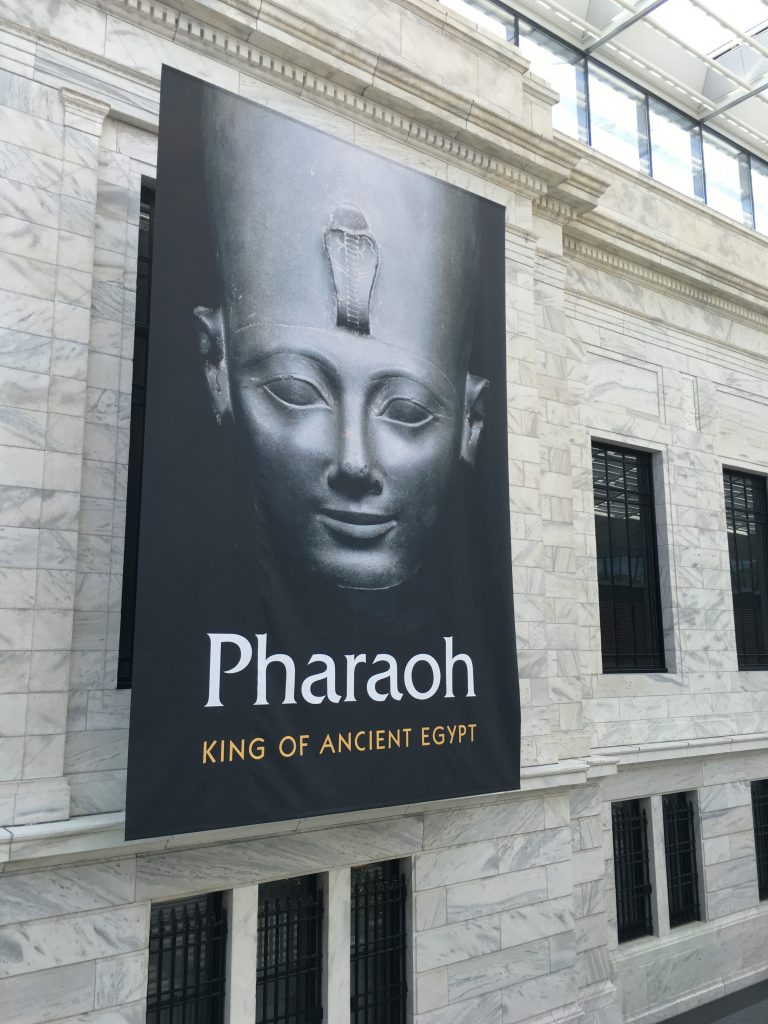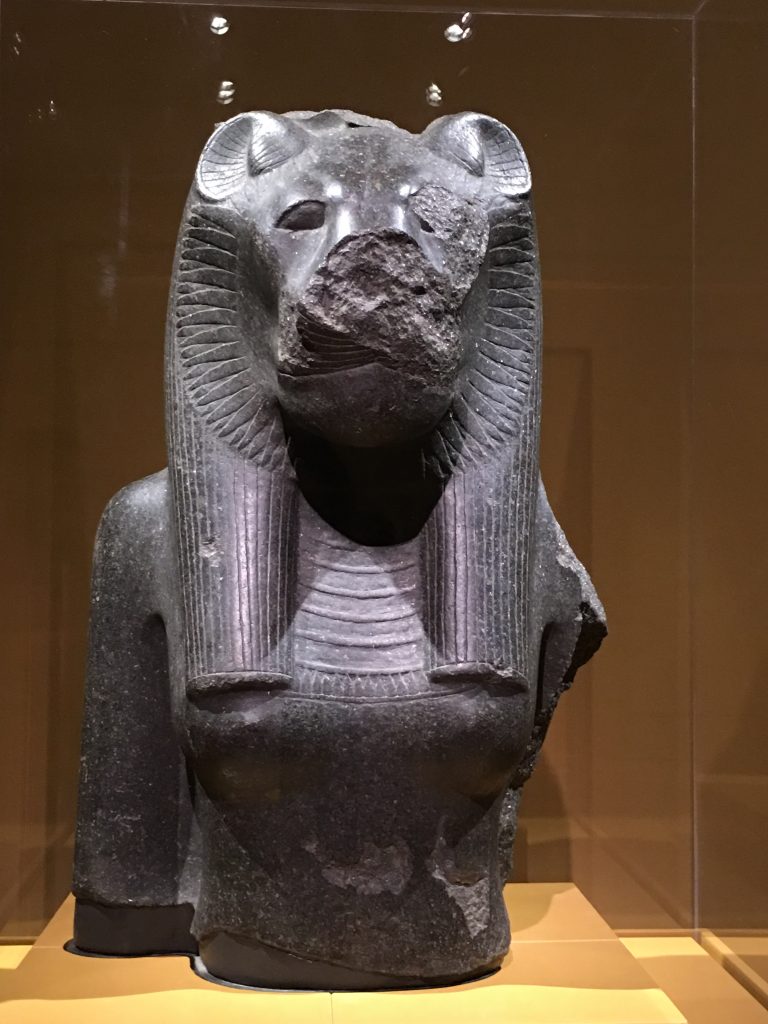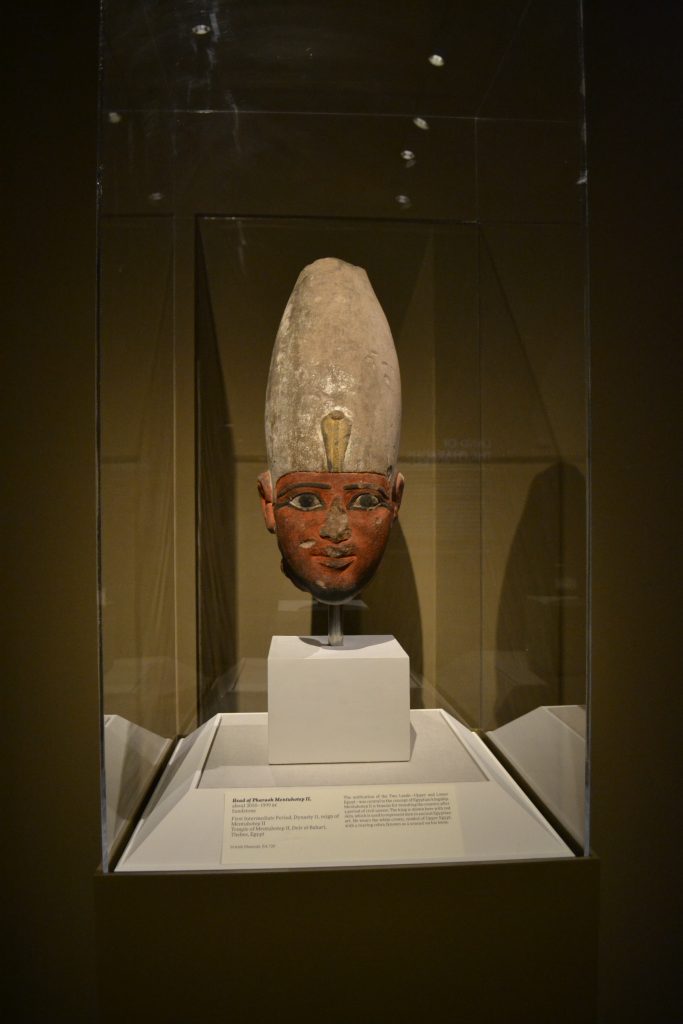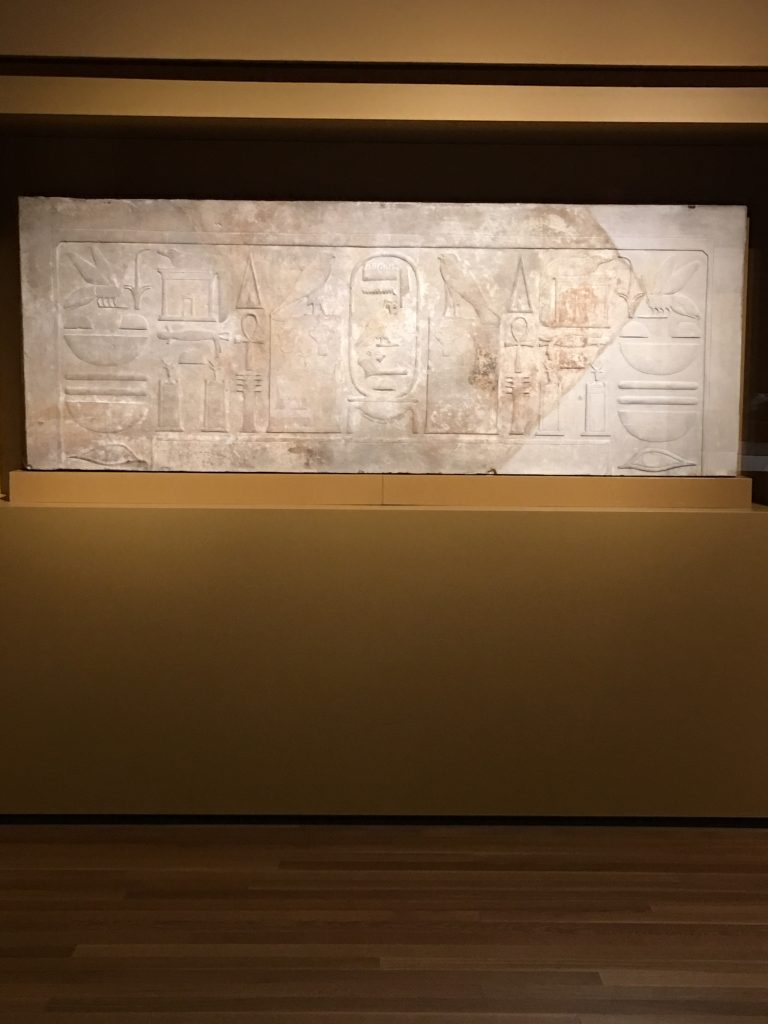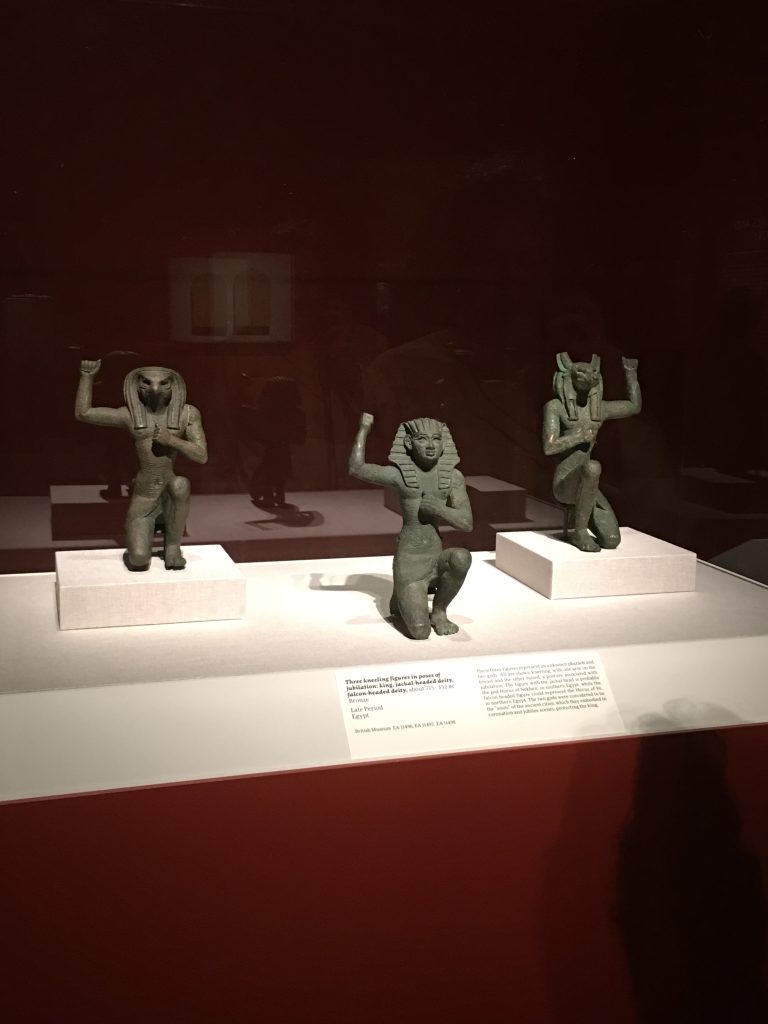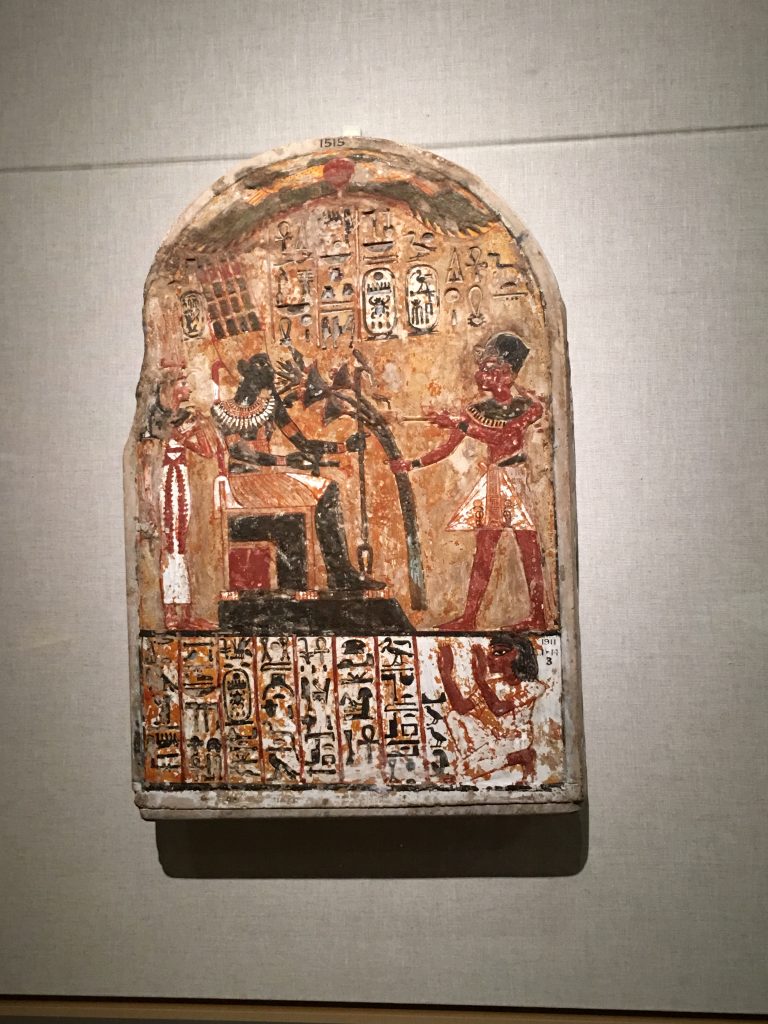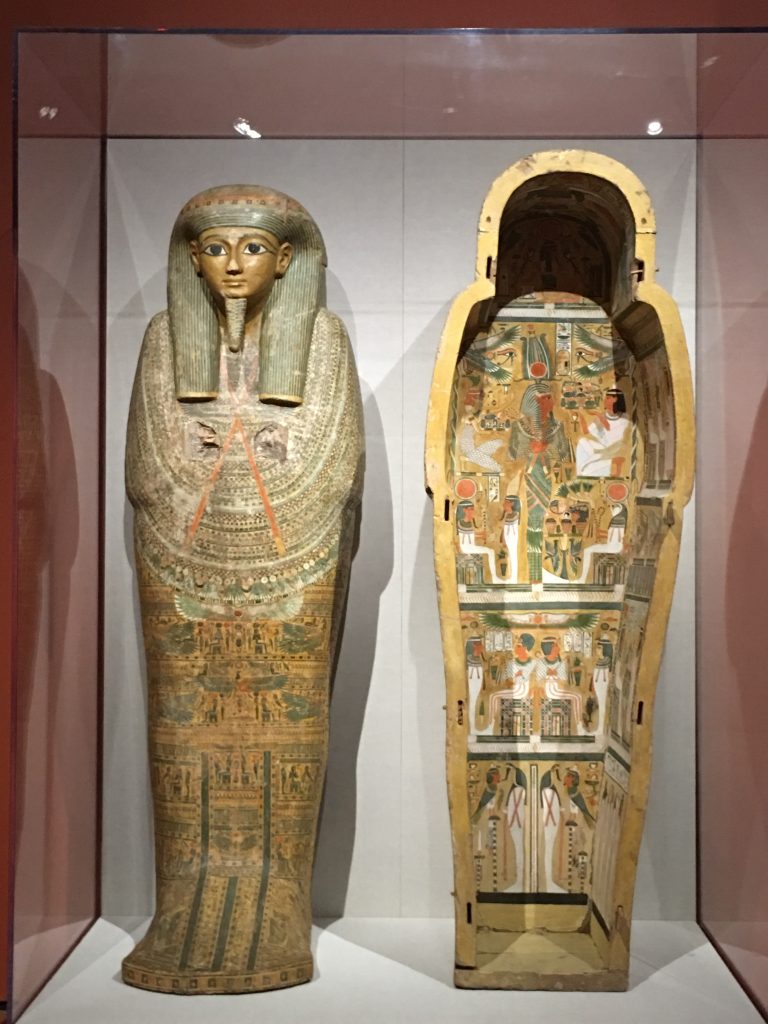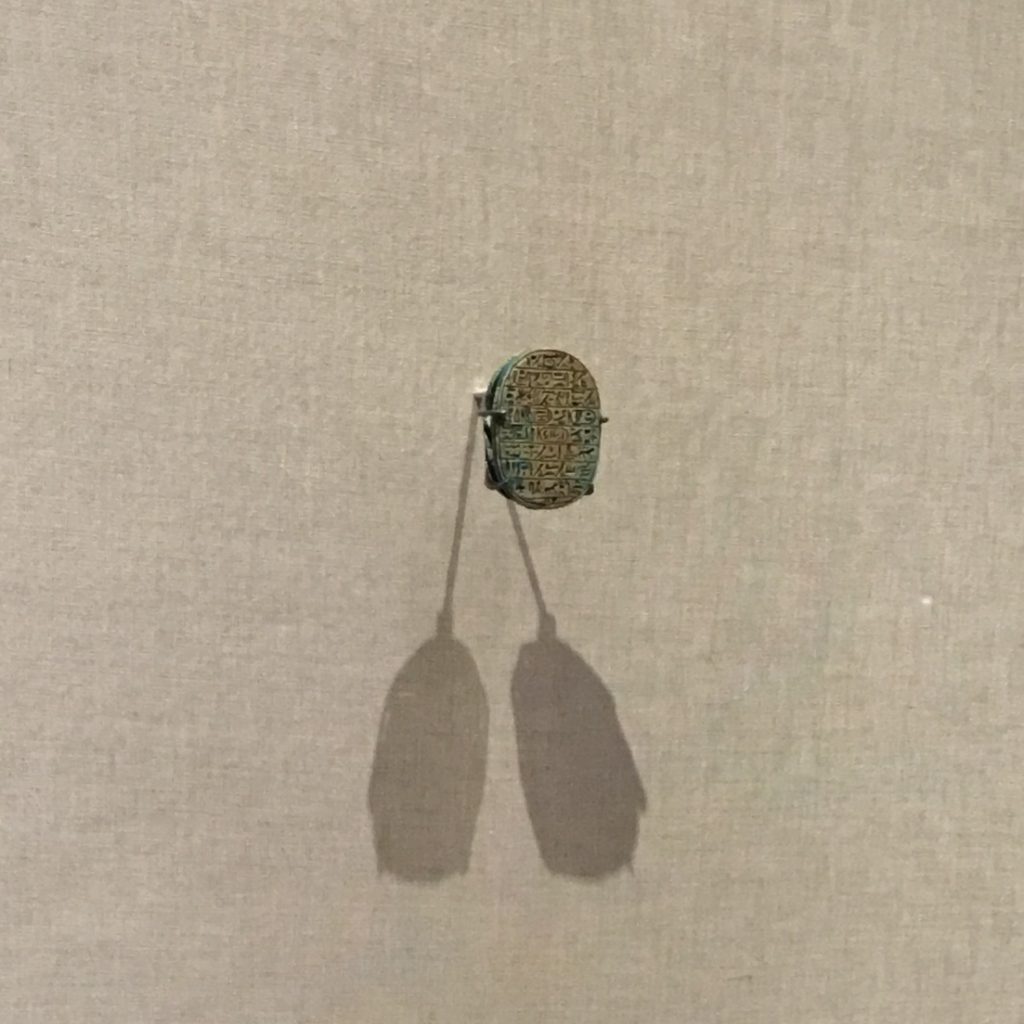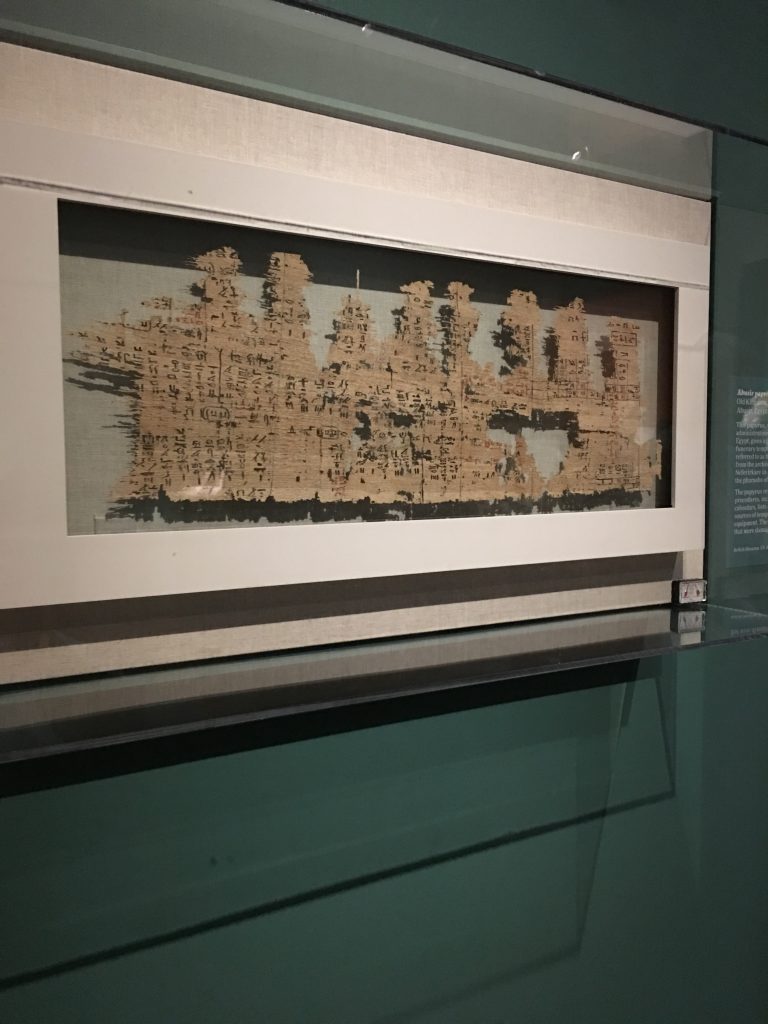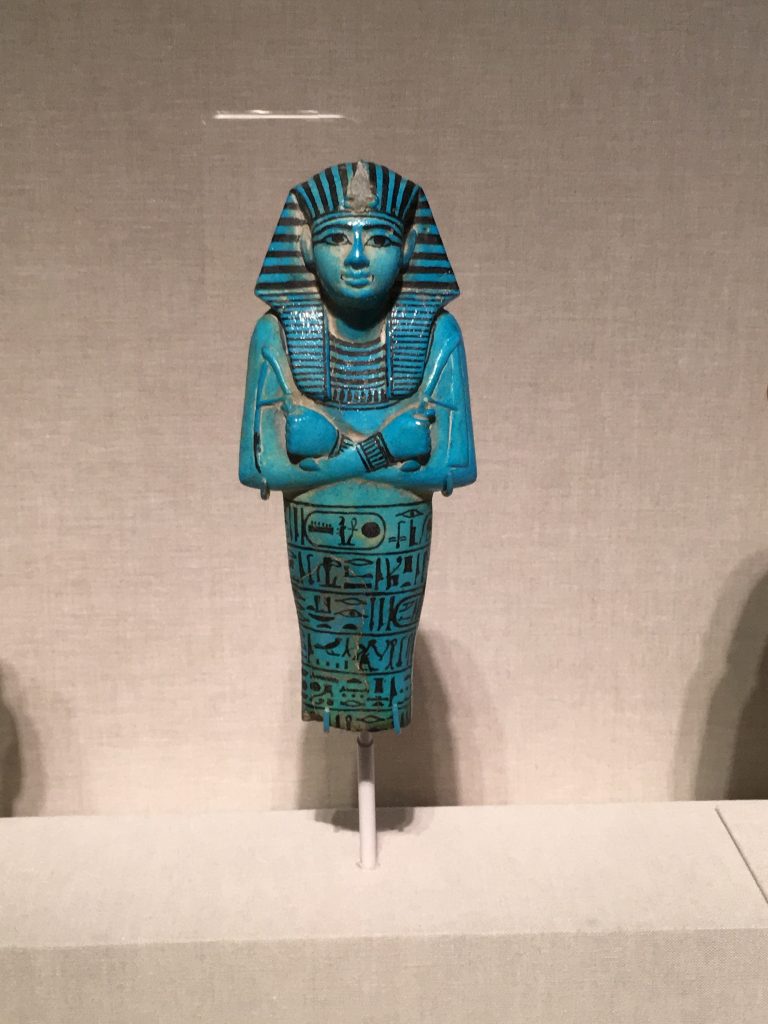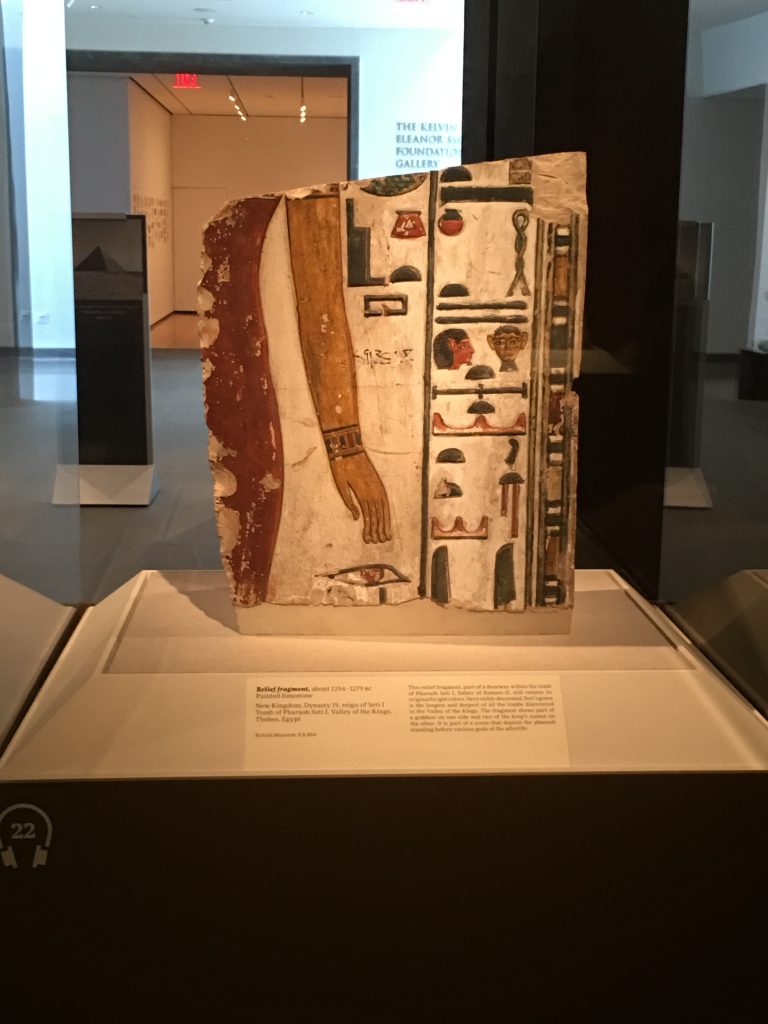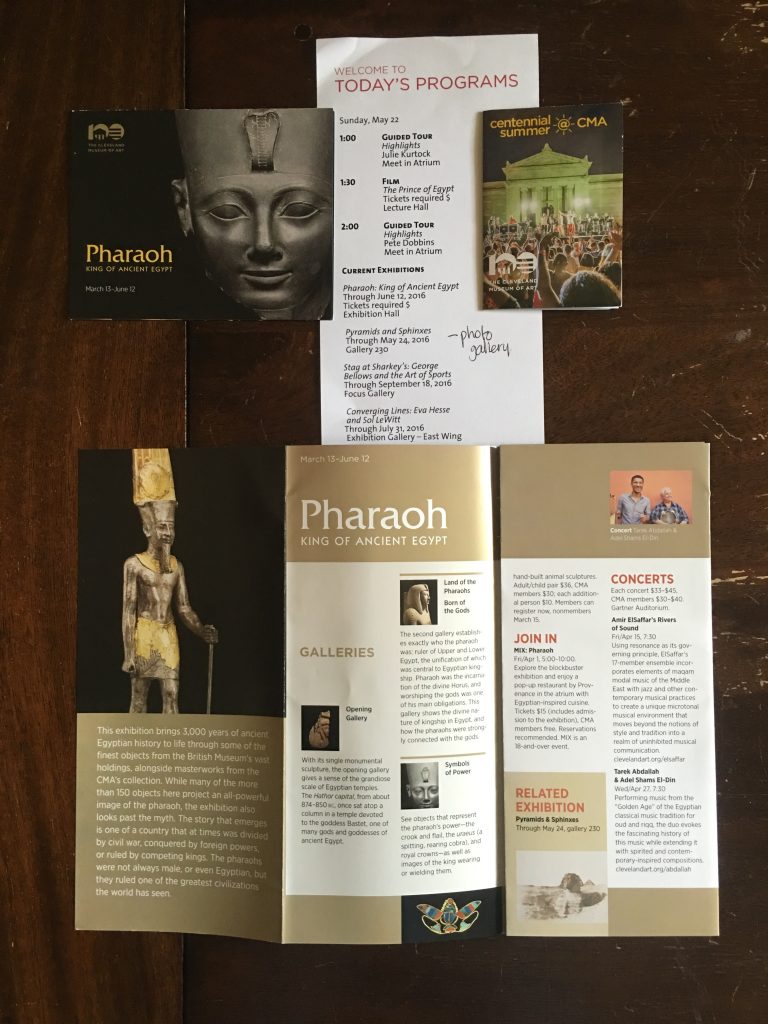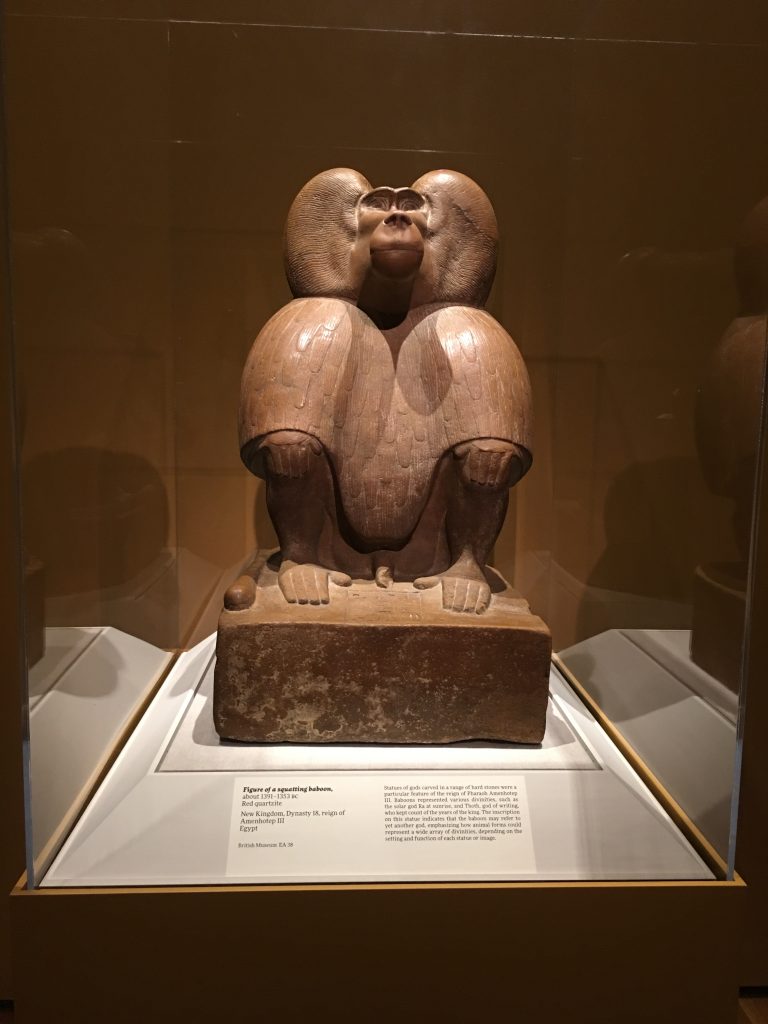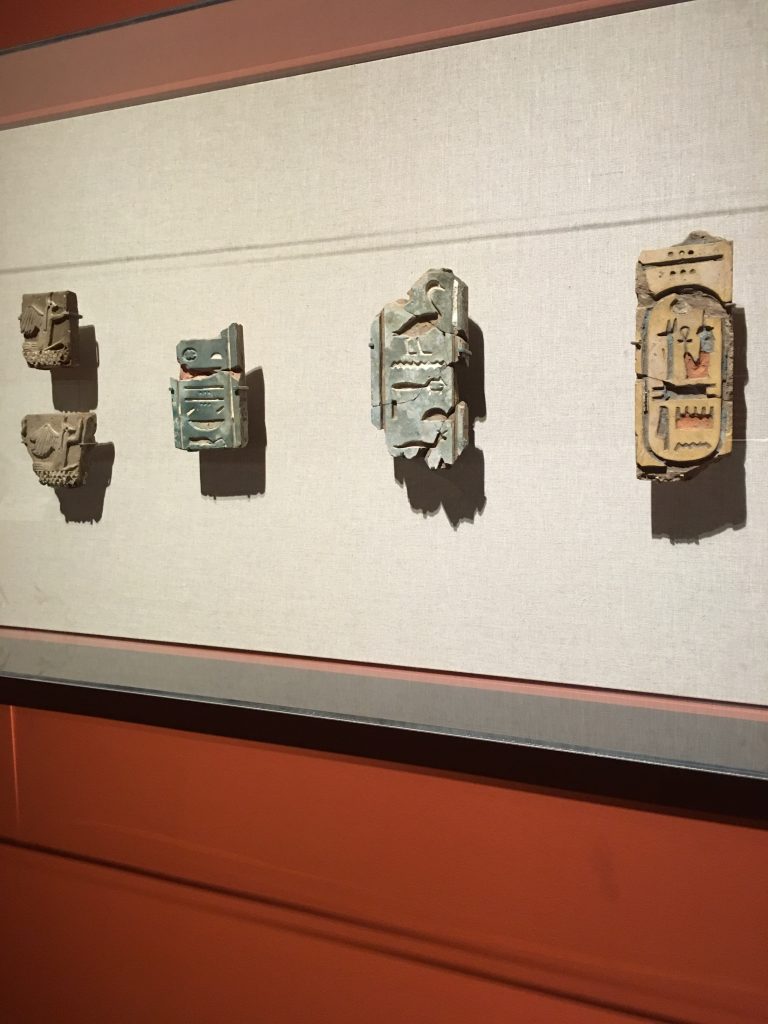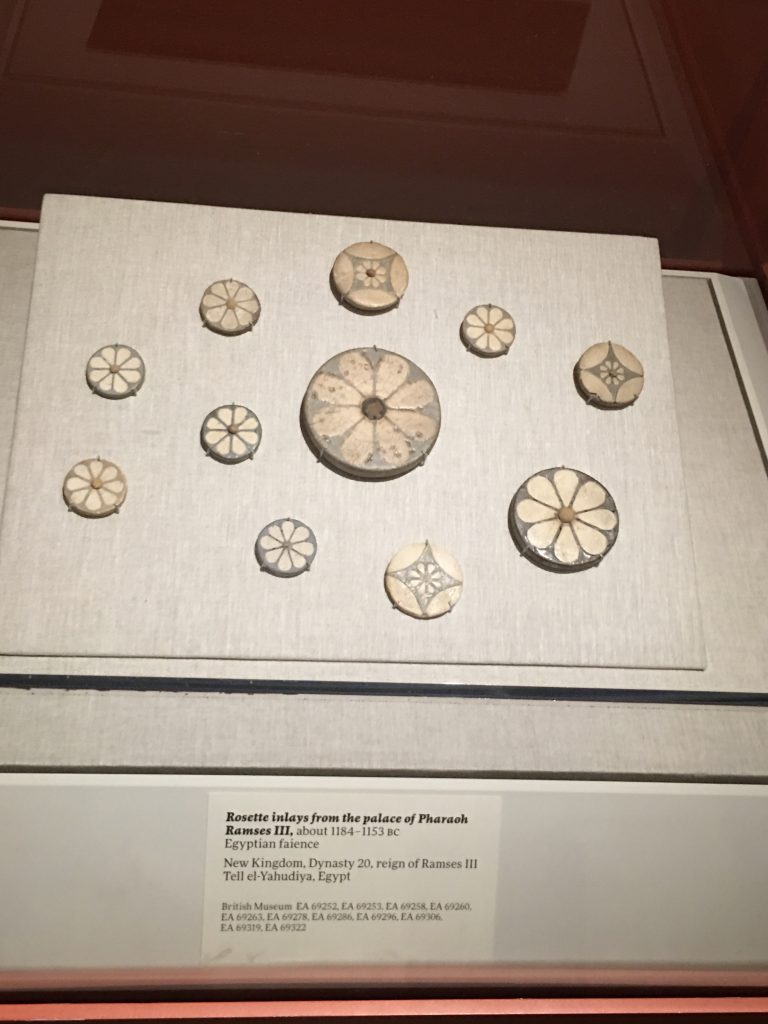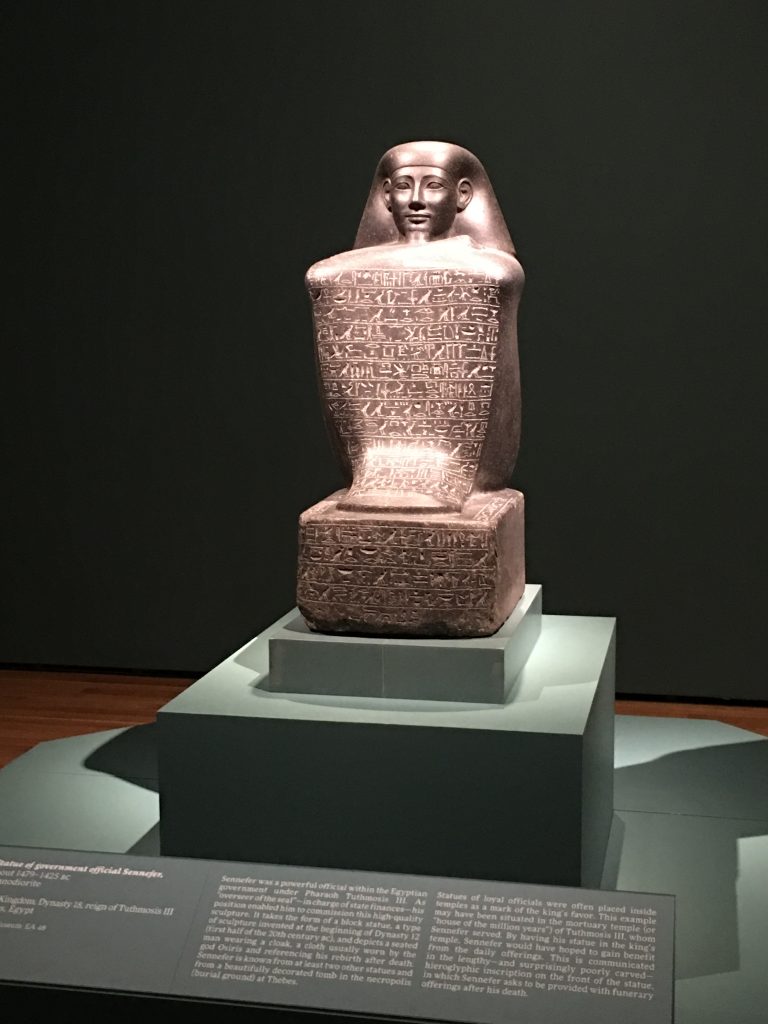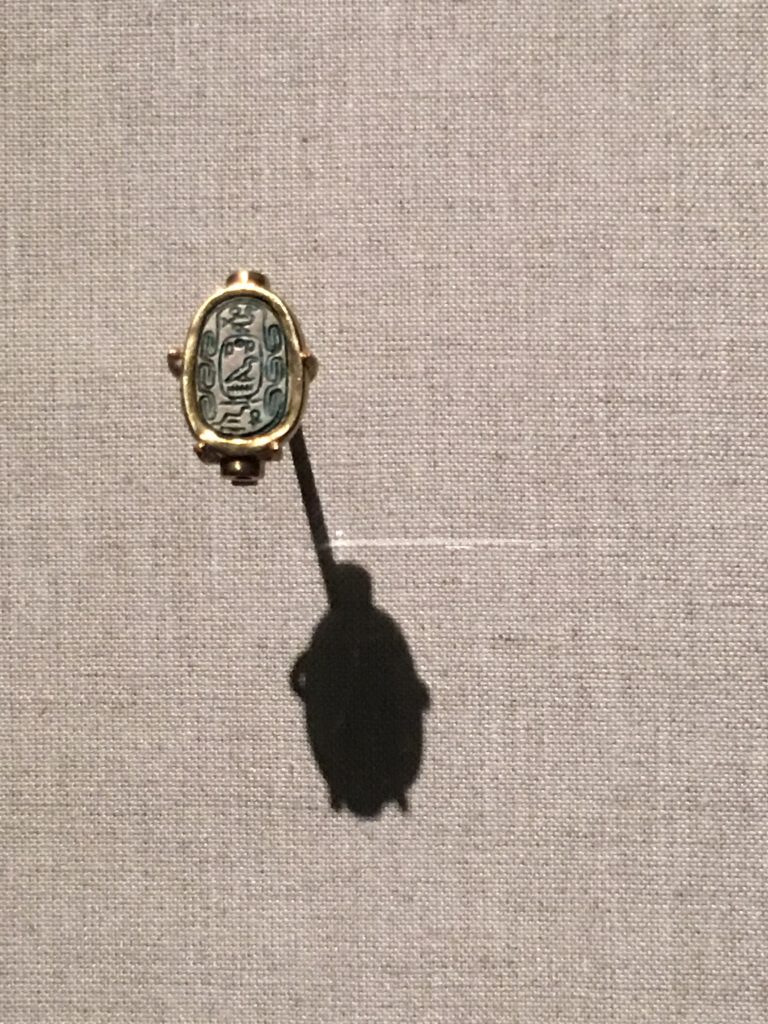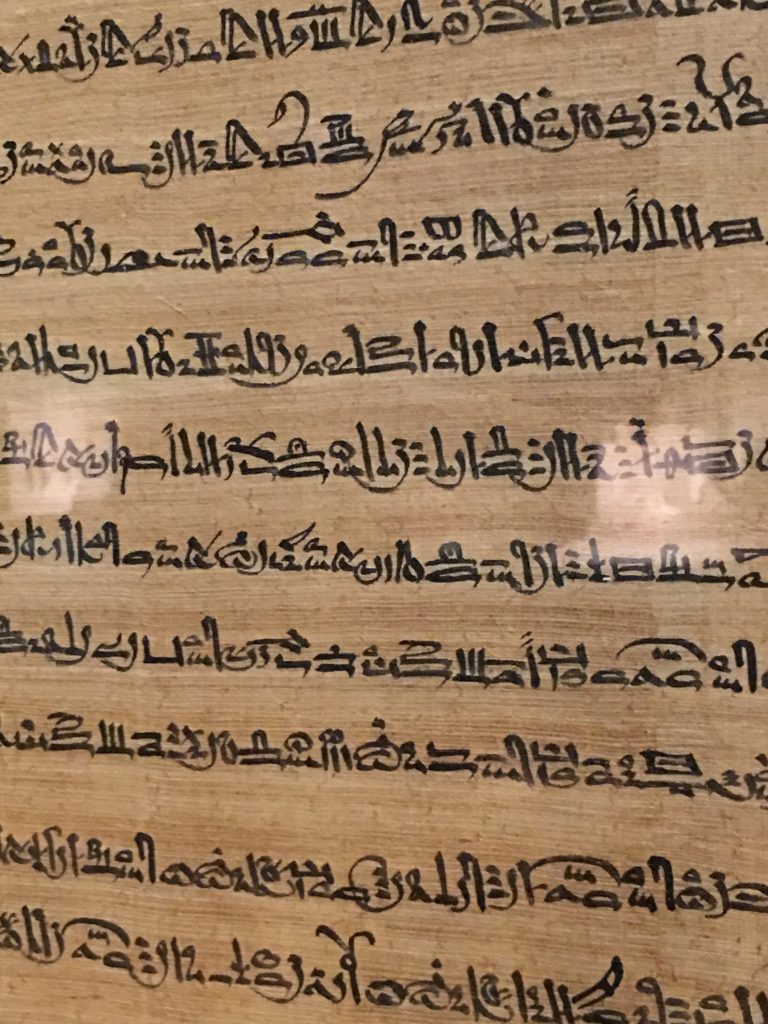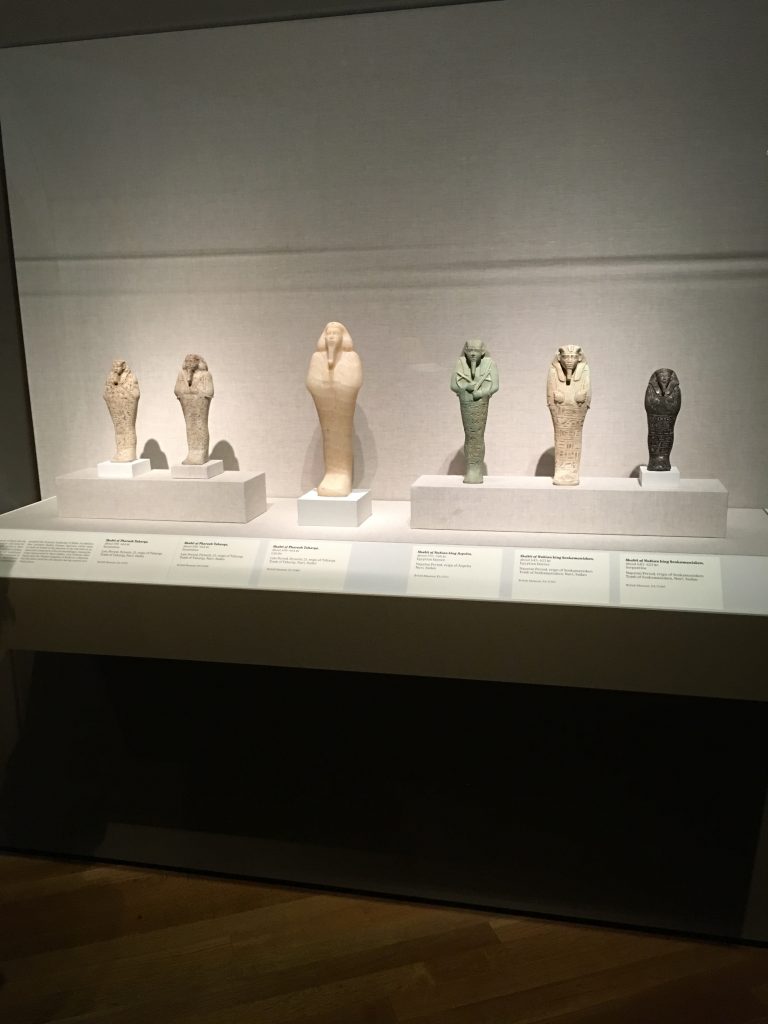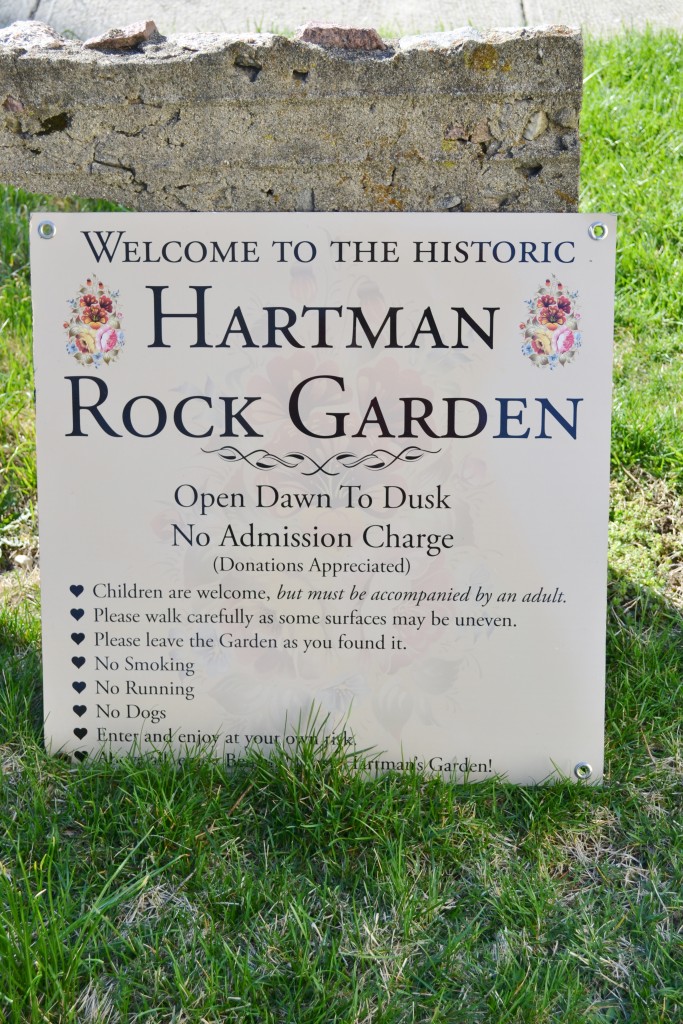
Approaching the residential house on the corner of Russell and McCain, Hartman Rock Garden could easily be missed if it wasn’t for the welcome signs. I found a parking spot nearby and began to walk towards the left side of the house. I entered towards the back through a white picket fence where I found a guide book and a map.
Ben Hartman began his work on the Hartman Rock Garden during the Great Depression when he was laid off from his job at the age of forty-eight. Over the next twelve years, he continued to add on to his garden by constructing over fifty projects including famous monuments and figurines.
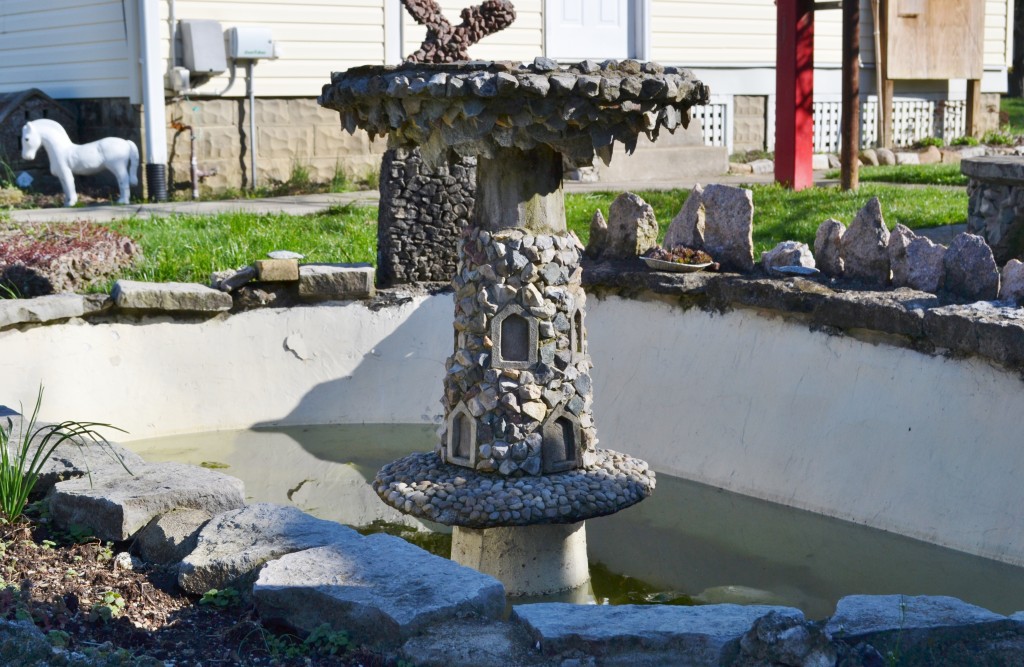
I skimmed through the booklet to learn more about about Harry George “Ben” Hartman, the man behind the artwork and noticed the self-guided walking tour. I was so excited to start my visit to this unique little garden and to learn about each of the lovely structures Ben had created.
I left a donation, reviewed the guide and began the walking tour at The Fishing Pond towards the center of the yard. This was the first project of Hartman’s that started this “garden of love” known today as the Hartman Rock Garden.
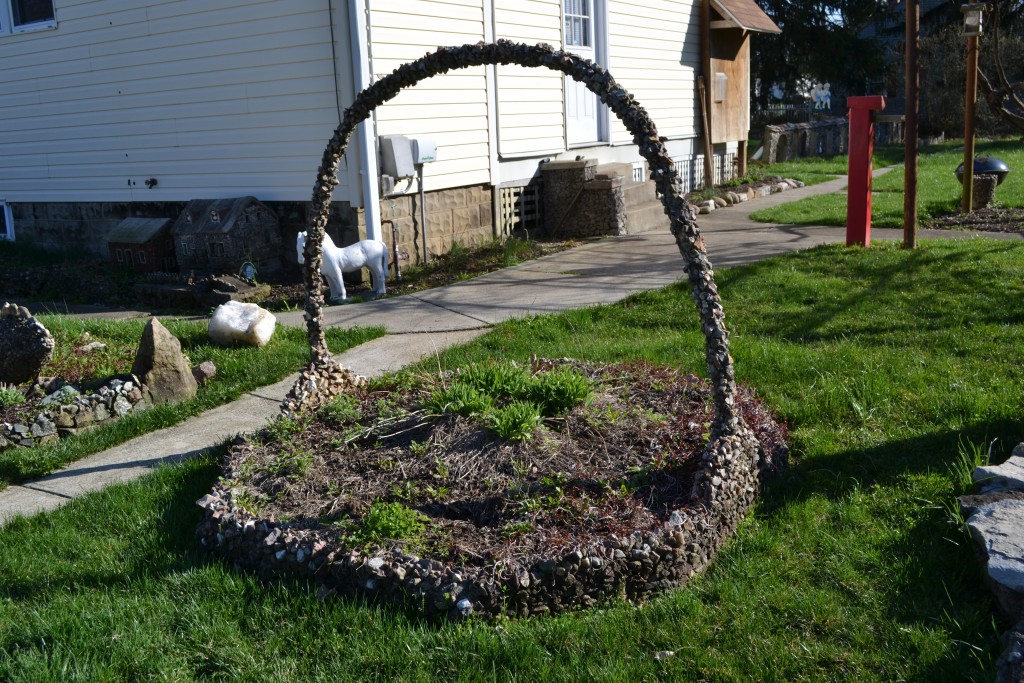
Ben loved nursery rhymes, so the Rose Basket was filled with figurines recreating some of the most well-known nursery rhymes: Jack & Jill, The Old Woman Who Lived in a Shoe and Peter, Peter Pumpkin Eater. These small delicate figures made of stone are available for viewing only during special events and behind the scenes tours.
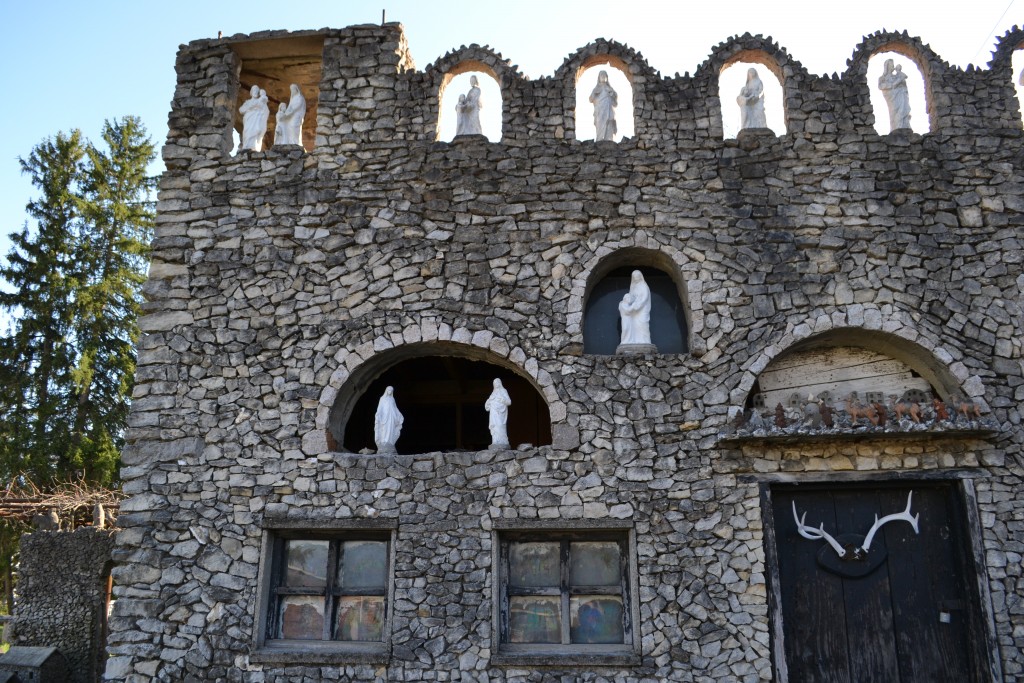
In addition to fairy-tale figurines, Mr. Hartman reproduced some of the local landmarks of his hometown of Springfield, Ohio. Fascinated by historical structures from all over the world, he re-created several of these as well. The Cathedral is the largest project completed by Hartman, standing 14 feet tall. Replicating the spectacular cathedrals of Italy, inside are niches showcasing several Madonna figurines.
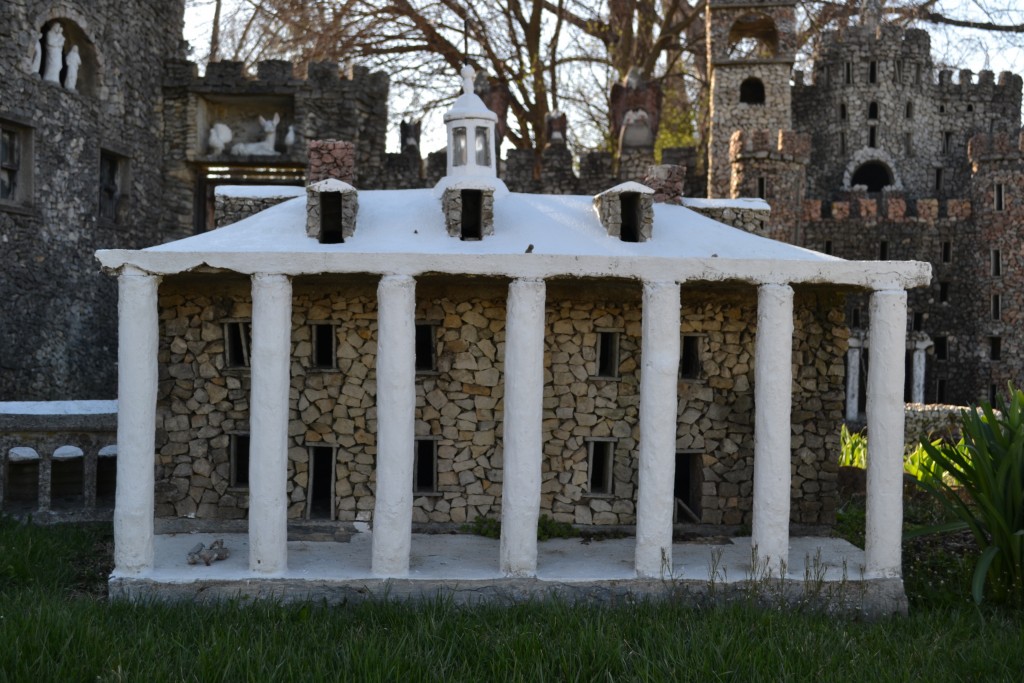
Because Mr. Hartman also took an interest in American History, there were a few designs based on several historic buildings and events that took place throughout the United States. Mount Vernon, the childhood home of the country’s first president, George Washington was beautifully created with stately columns and multiple windows. Peeking through the windows, I could see small, period figurines that would have coincided with this historical period.
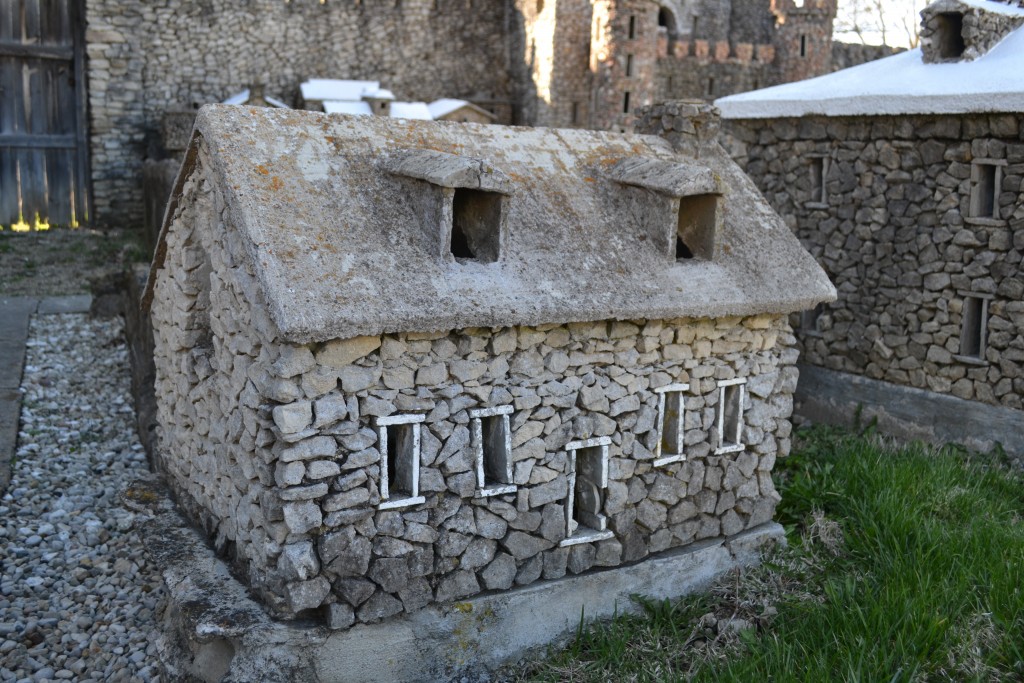
Hartman gathered small stones on his property to create the structures of George Washington’s Valley Forge. The delicate stonework and the dormers shaped into the concrete roof showed Hartman’s attention to detail as well as his love for creating these amazing pieces of art.
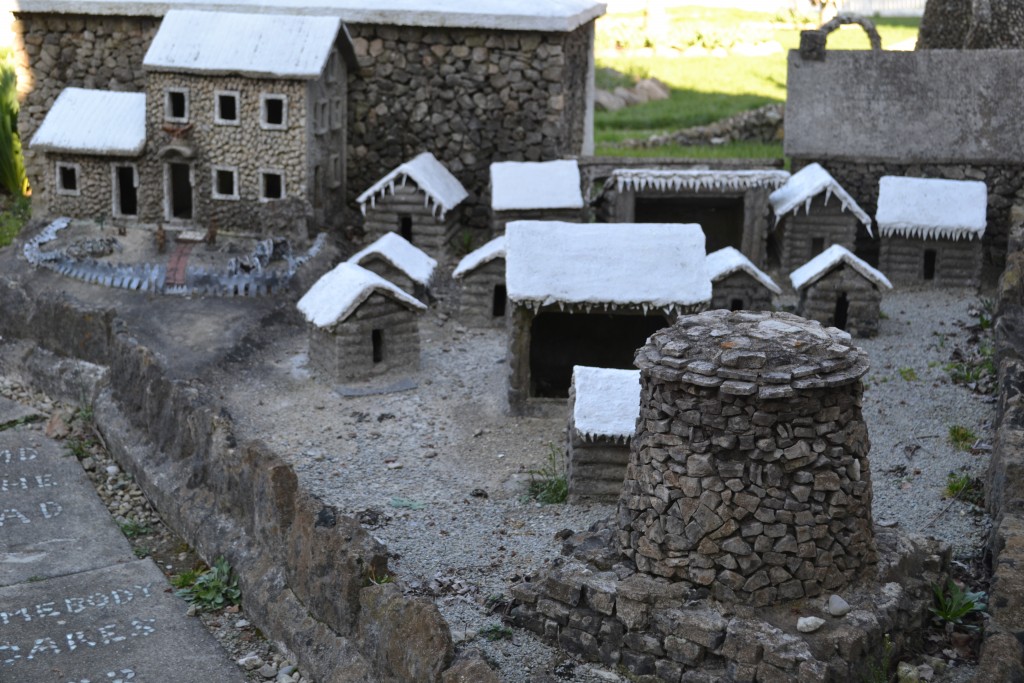
A continuation of the Valley Forge display showcases the smaller lodging areas for sleeping. One of the details that Mr. Hartman included were the icicles that clung to the rooftops of the miniature buildings. I also noticed the small, weathered handwritten cards identifying some of the structures. Unfortunately they were difficult to read, so I made my next stop at Custer’s Last Stand.
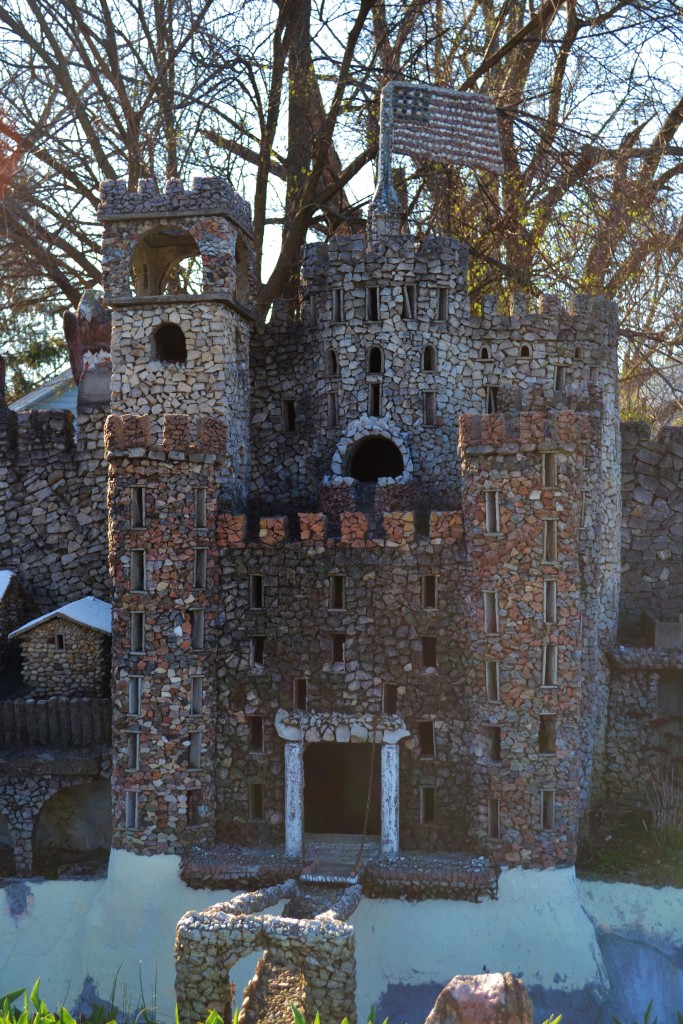
I was soon approaching my favorite part of the garden known as The Castle. Rising twelve feet high, this masterpiece is surrounded by a moat and equipped with a working drawbridge. This medieval fortress was created by Hartman out of mixed stone, concrete and grey dolostone. With 107 windows and 100,000 stones, it took him only fourteen days to build.
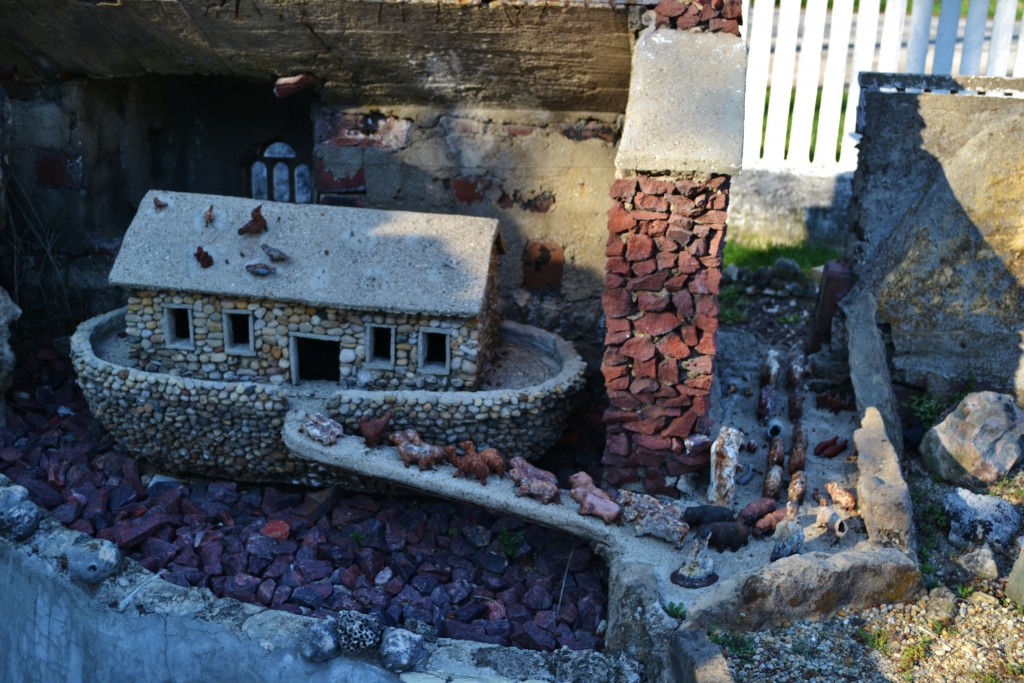
With a pathway of animal pairs making their way to the entrance of this large boat, there was no mistaking this was Noah’s Ark. The recreation was perfect to the last detail with a pair of doves on the top of its roof and fourteen pairs of metallic animals making their way to the ark’s entrance. I absolutely adored this rendition of one of my favorite Bible stories.
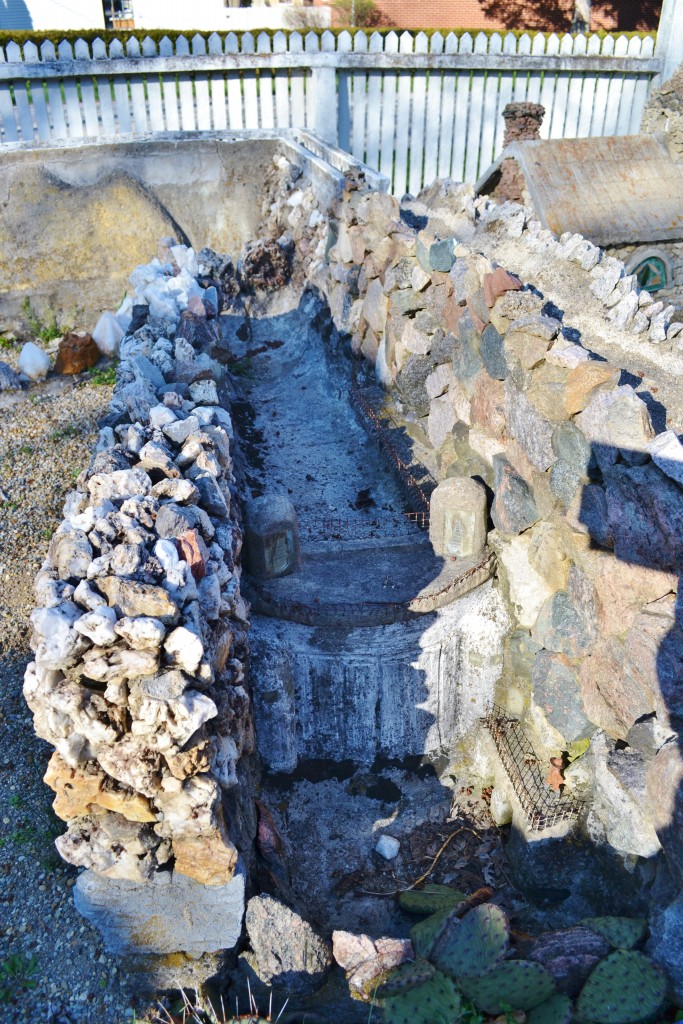
From Death Valley to the Oregon Trail, even Hoover Dam was unmistakable.
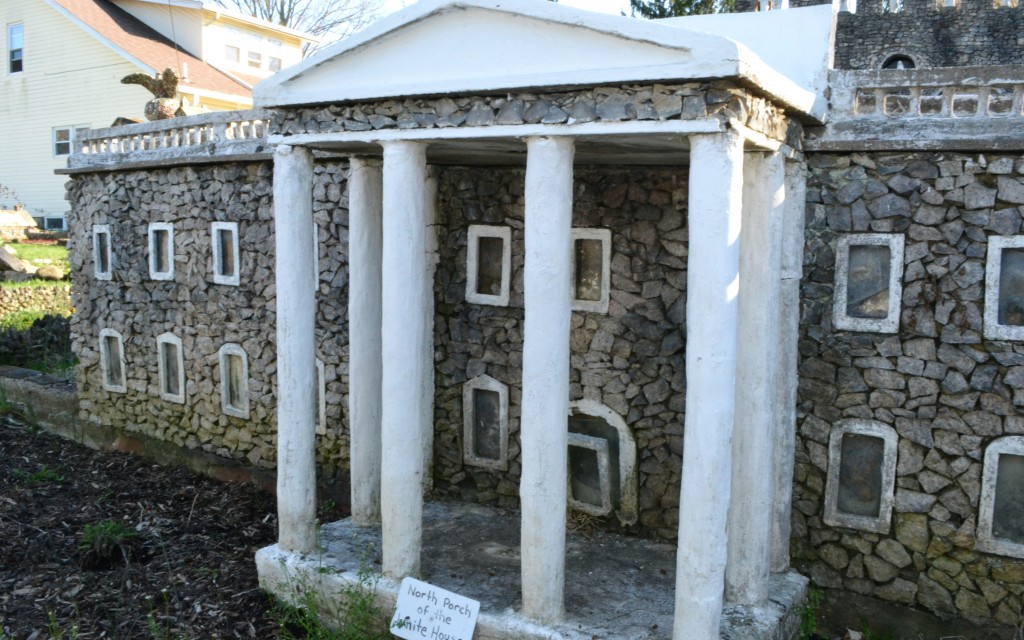
The White House, made from concrete and granite, was another lovely tribute to American History.
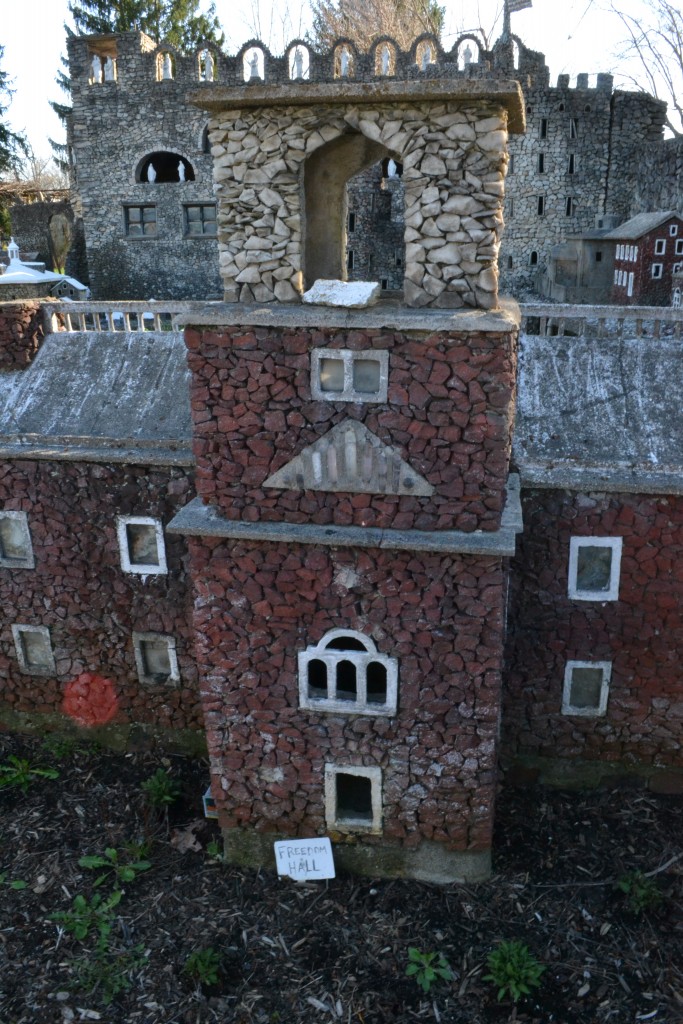
Adding a little color to the collection is Philadelphia’s Independence Hall. Also known as Freedom Hall, this meticulous miniature was built from red brick.
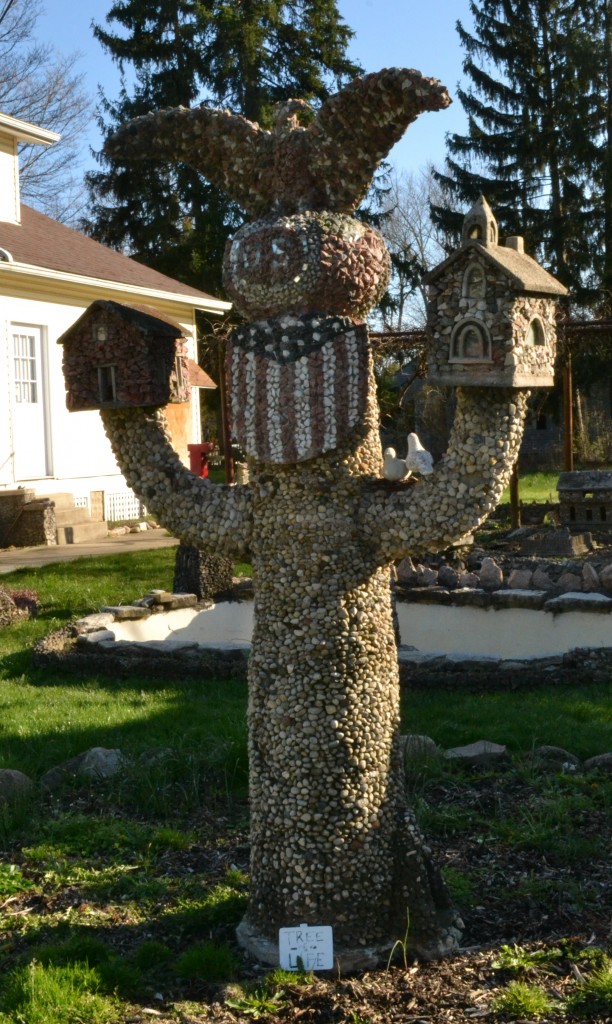
It is said that the Tree of Life was one of Ben Hartman’s favorite works and is considered one of his most impressive. The tree symbolizes country, school and church, which Hartman felt were the most important things in a man’s life. There are close to 20,000 stones used to create this sacred tree.
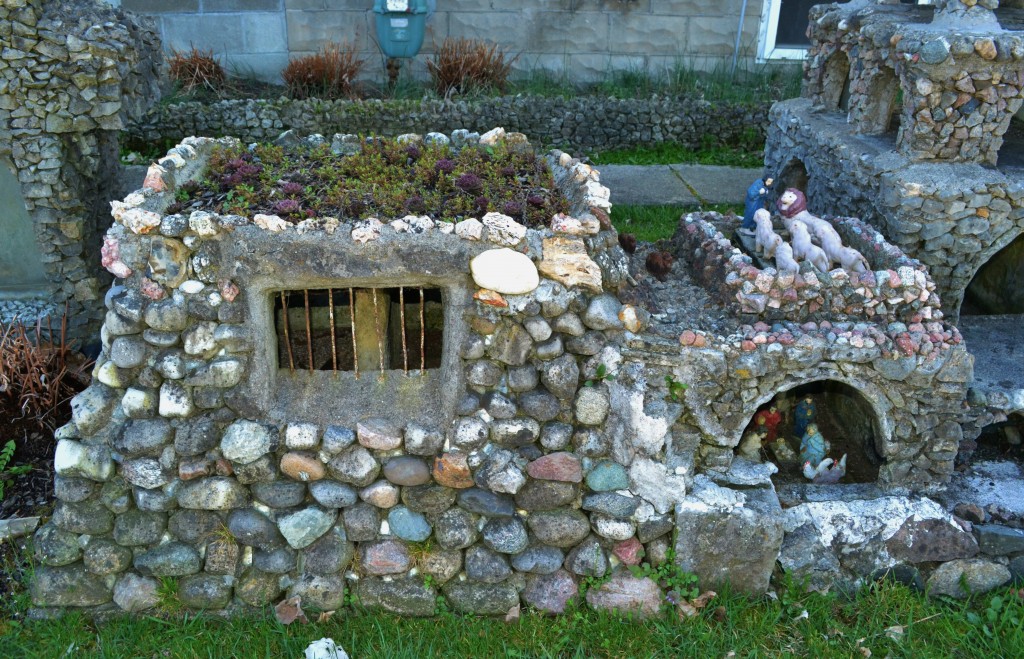
Created around 1932, a colorful planter depicts two Bible stories. With flowers to the left, the figurines to the right represent both Daniel in the Lion’s Den atop the structure and the Hebrew Children in the Fiery Furnace below.

Based on his Christian faith, Hartman designed a beautiful nativity, the place where Jesus was born, Calvary Hill where Jesus was crucified and the empty tomb where Jesus would rise from the dead.
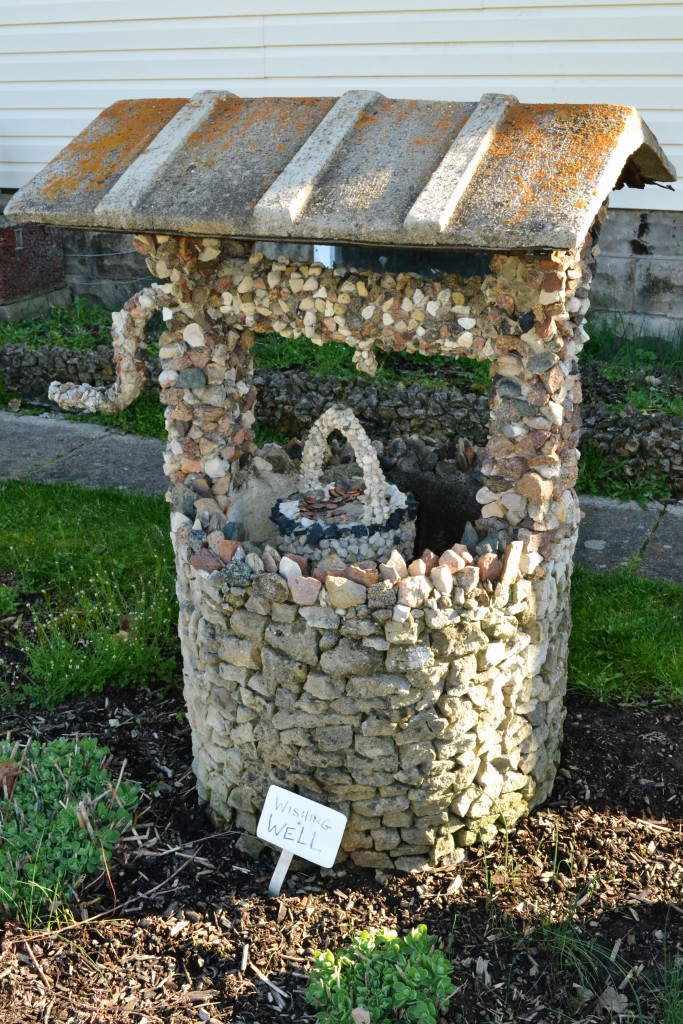
My last stop was to the Wishing Well made of concrete, dolostone, granite and a mix of stones. Beneath the cover was an old wooden bucket, so I made a wish and placed a few coins inside.
There are close to fifty structures on display at Hartman Rock Garden. Each unique, they held a special place in Ben’s heart. Today the garden is considered a work of “in situ folk art” and thousands of visitors come from all over the world to admire the unique works of Harry George “Ben” Hartman. You may be so inspired to create a beautiful garden for yourself.
Have you had the opportunity to visit Hartman Rock Garden in Springfield, Ohio? I would love to hear about your time spent here if you would kindly leave a message in the comments section below! Many thanks and Happy Travels!
What to See and What to Do:
Hartman Rock Garden
1905 Russell Avenue
Springfield, Ohio 45506
Email: info@hartmanrockgarden.org
- Admission Fee: Free but a $2 per person donation is appreciated.
- Hours: Open daily, 364 days, from dusk until dawn
- Amenities: Self-guided tours
- Length of Visit: 1 hour
- Tips for Your Visit: Pick up a flyer on the property for the self-guided tour. Directions: Traveling south down South Yellow Springs Street leaving downtown Springfield, you will pass John Street and will see McCain Avenue to your right. Turn onto McCain and within a couple of blocks there is a white picket fence which was the home of the Hartmans.
Where to Stay:
Courtyard by Marriott Downtown
100 South Fountain Avenue
Springfield, OH 45502
Telephone; 937 322 3600
Where to Eat:
Seasons Bistro and Grille
28 South Limestone Street
Springfield, Ohio 45502
Telephone: 937 521 1200
My favorite item on the menu is the Bibimbap, a Korean rice bowl with marinated beef strips and seasonal vegetables served over white rice. Topped with a fried egg and Korean chili paste.
Another seasonal favorite that is offered on a limited basis is their grilled Chilean sea bass!
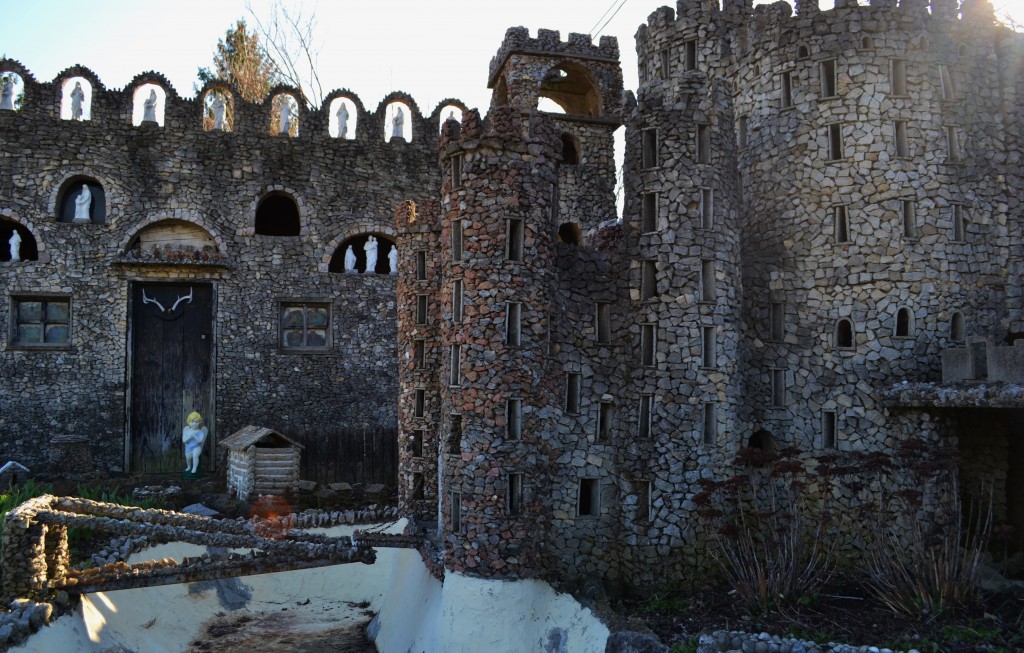
One of my favorite views of The Castle
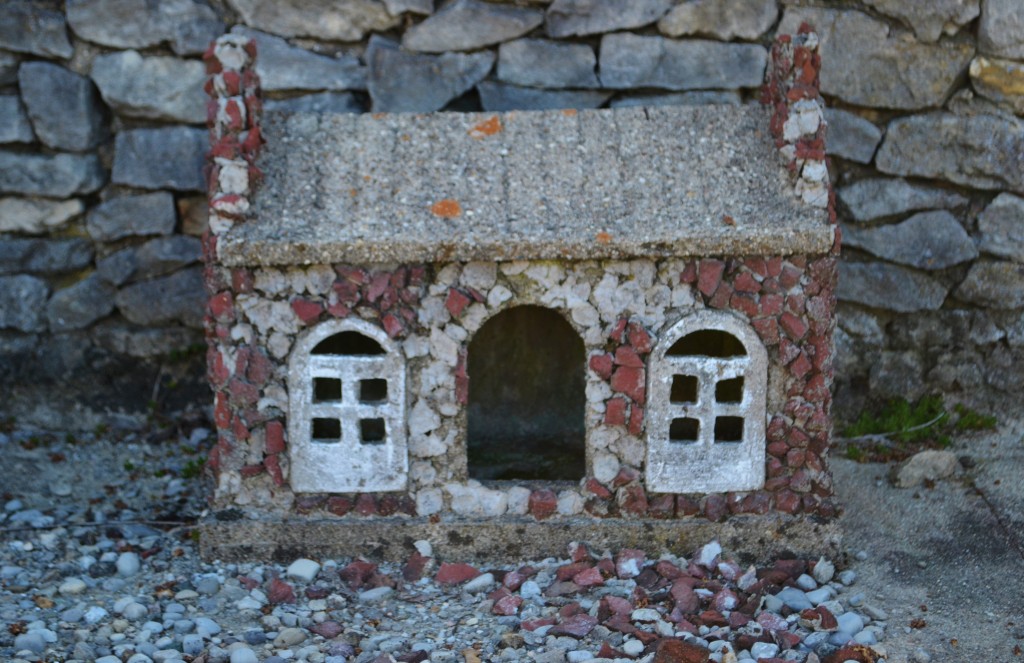
John Brown’s Fort
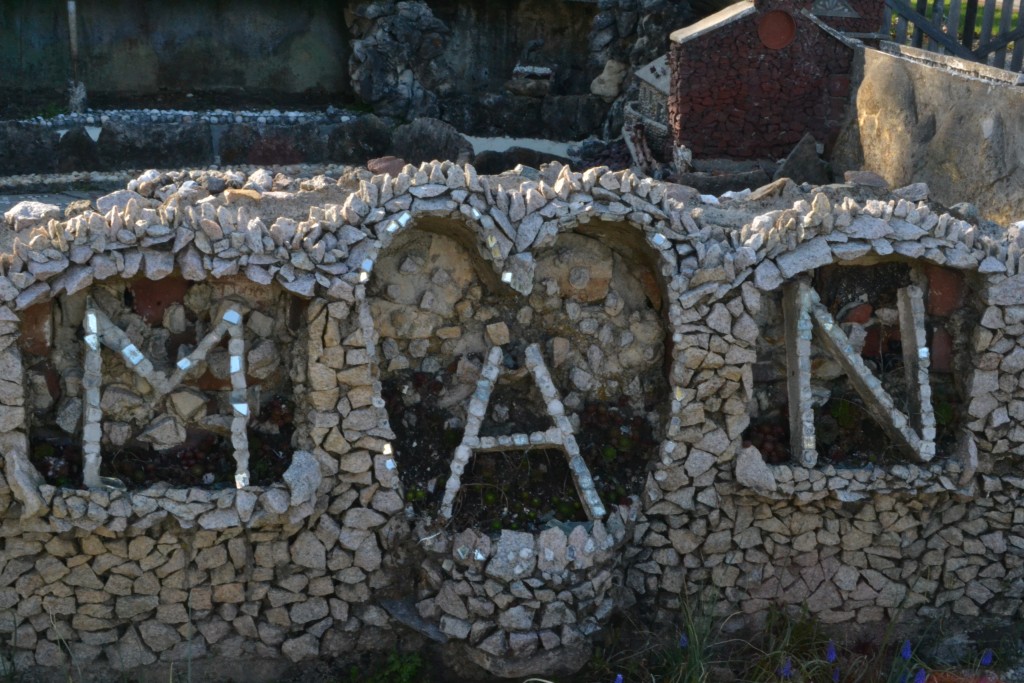
The Heart Man is the symbol of the garden. It is made from concrete, granite and mirrored glass.

The Oregon Trail
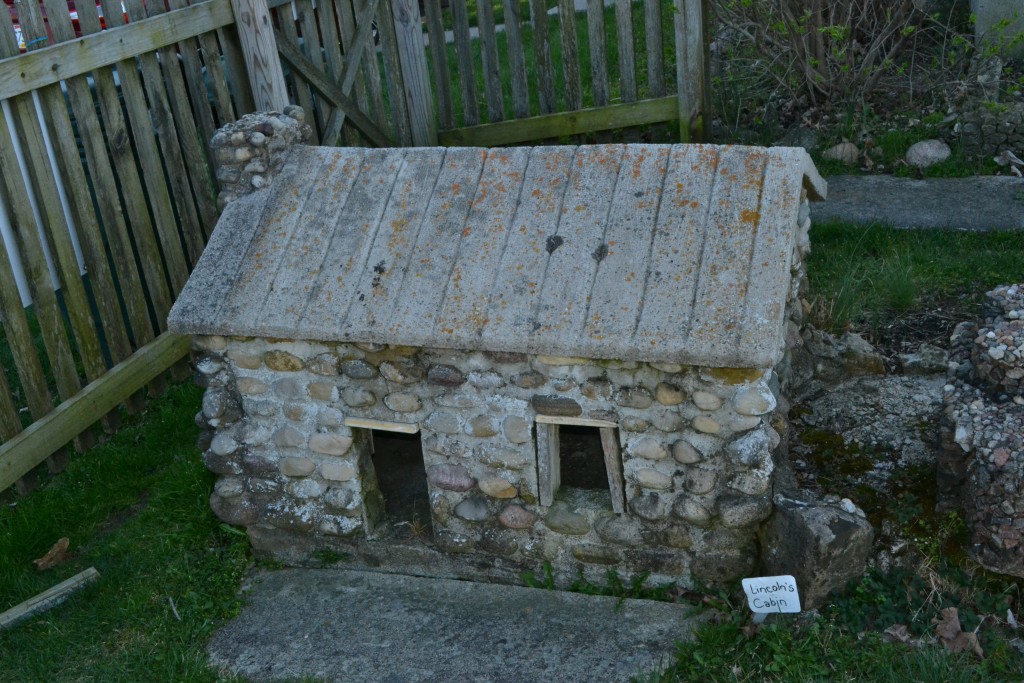
Lincoln’s Cabin
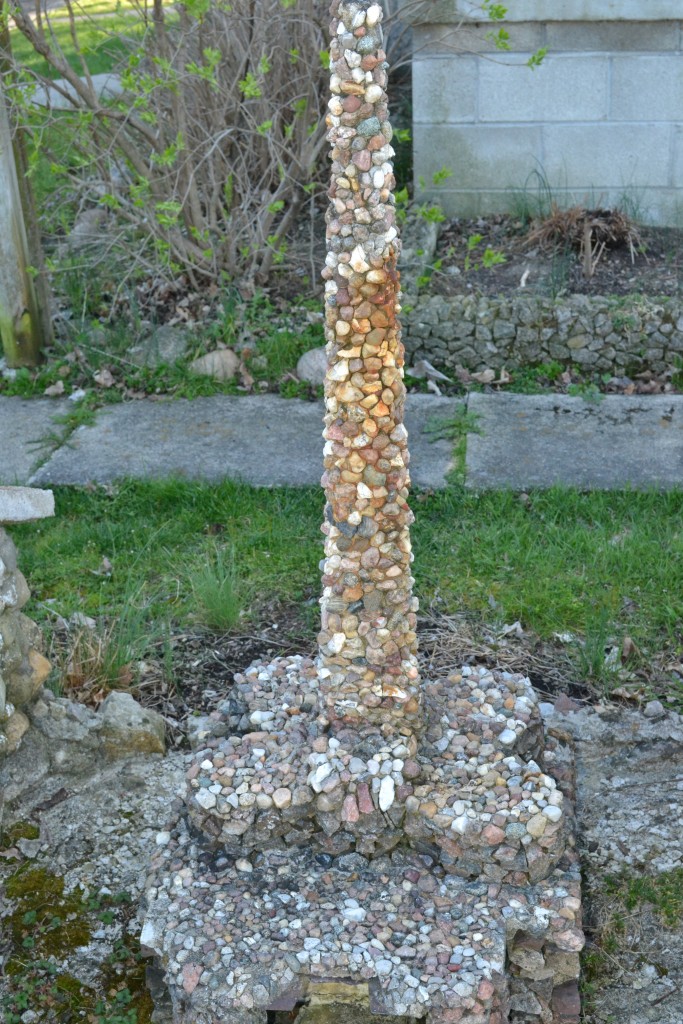
Lincoln’s Tomb
